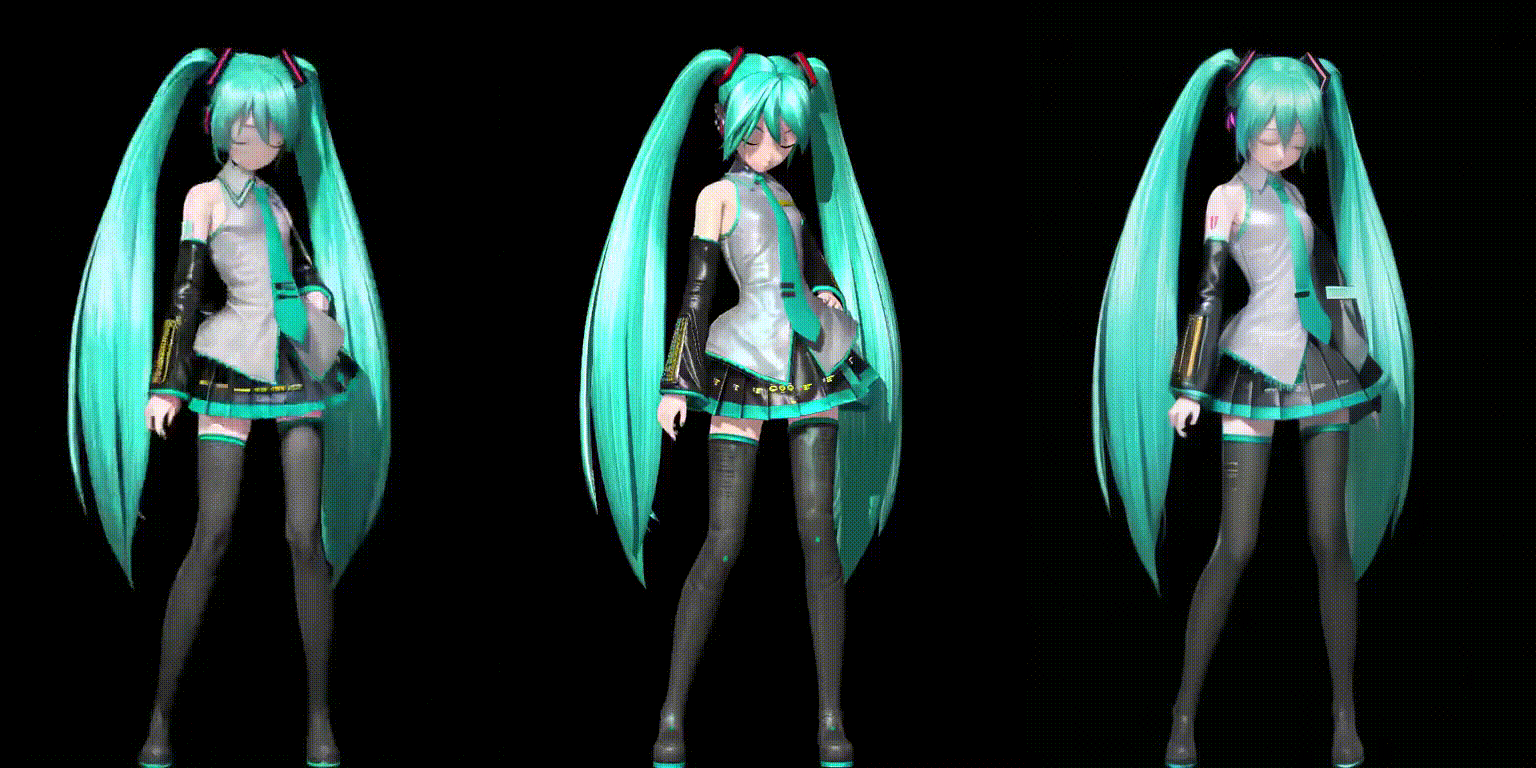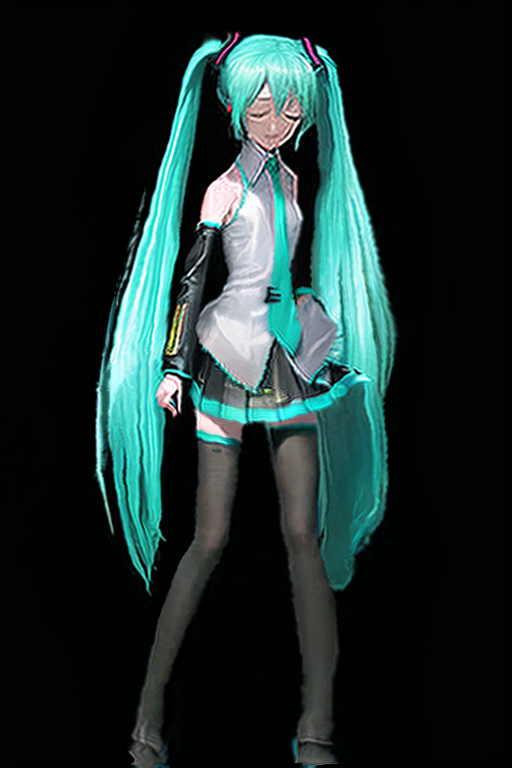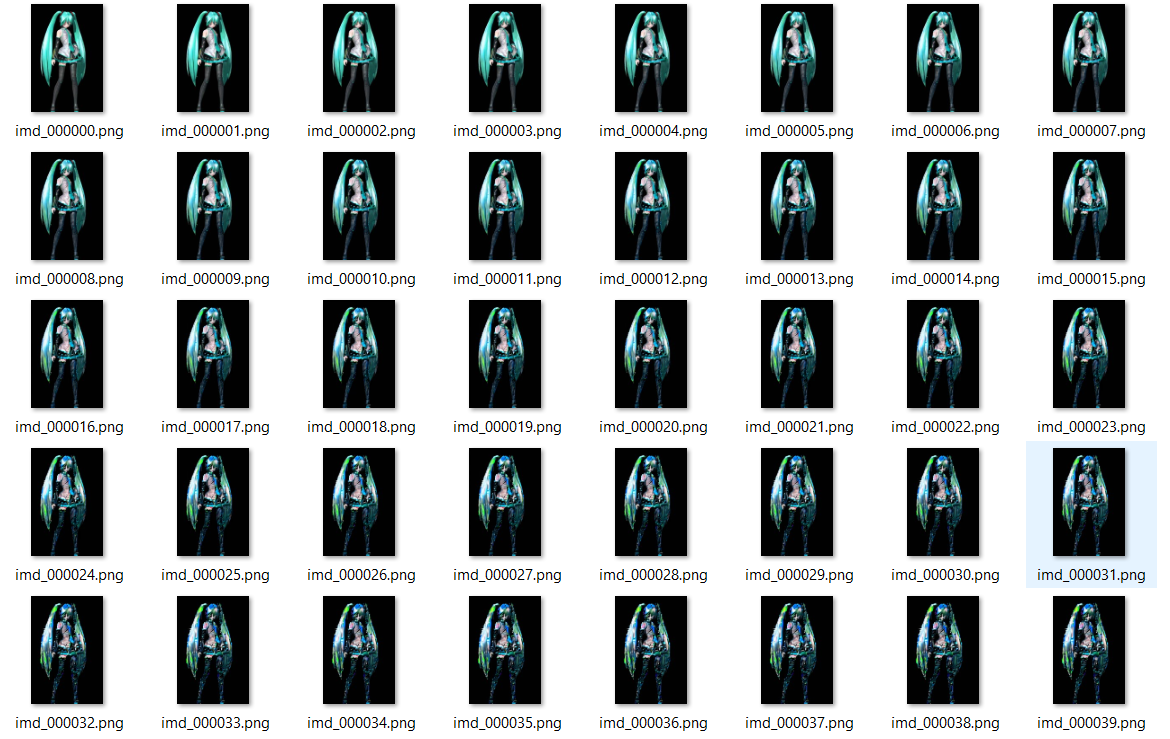Source https://www.youtube.com/watch?v=eroDb6bRSKA
A cropped version can be found in showcase/example.mp4 folder

Left - Img2img unguided
Middle - Original MMD
Right - Guided
Created using only img2img with denoise strength of 0.4
AI generated animation with stable diffusion often suffers from flicking due to the inherent randomness in the generation process and the lack of information between frames. This project intents to solve this issue by guiding image generation process using frame predicted by optical flow.
We first find key frames in the video, each key frame
This is different from wrapping the previous frame, as doing that will lead to result in Section Failed attempts/2
The key frames are generate individually for now, one can generate them by applying the same procedure as regular frames or use method like Multiple Frame Rendering to generate consistent key frames.
We can extend optical flow warping from between two frames to warping between multiple frames. Namely one can generate a frame by warping the eyes from a frame that has the best eyes and legs from another frame a frame that has the best legs. Frames can be from the past or the future.
This repo is for people who have basic knowledge of stable diffusion and Python.
- You need a base model and its inpainting model, here I use Grapefruit
- You need a booru tagger, here I use wd-v1-4-swinv2-tagger-v2
- You need PDCNet+, it can generate optical flow and confidence
- Get a video to process, resize it to resolution acceptable by stable diffusion (e.g. 512x768)
- Run
python ofgen_pixel_inpaint.py --i <video_file> --o <save_dir> - Output frames are named
<save_dir>_<experiment_name>/converted_%06d.png, use ffmpeg to create a video from them
Fixing noise (seed) helps
Guiding images during the denoising process always leads to blurry image, I suspect this is due to the Unet not knowing what should it do, the Unet trying to generate one image but the guidance tries to lead it to another image
Code is in ofgen_pixel_inpaint.py
So I tried feeding optical warped image. Pixels produced by optical flow with high confidence are kept and the low confidence pixels are masked for inpainting.
Two issues here:
- Pixels warped from optical flow continue to worse despite having high confidence

- SD's VAE when applied repeatedly (in video it means result from one frame is used to generate the next) leads artifacts

- Generate multiple frames simultaneously instead of one after another, during the denoise process minimize energy term that ensure temporary smoothness across frames
- Train a network to remove SD VAE's artifact
- Train a control net that use optical flow warped frame as reference to generate next frame, however I don't have any video dataset
- SD is not trained to generate intermediate video frames, either we retrain it or we only generate some "key" frames and generate frames in between using optical flow or any other video interpolation method
QQ群: 164153710
Discord https://discord.gg/Ak8APNy4vb
- No A1111 stable-diffusion-webui plugin which makes this repo a mere experiment, more work is required to bring this to the general public
We use Farneback for optical flow calculation, this can be improved with other newer optical flow algorithmWe use PDCNet+ for optical flow.- We only use img2img for frame generation due to its simplicity, better result can be achieved using ControlNet and custom character LoRA
- Multiple passes can be used for better quality
- The predication frame can be created from optical flow from both side, not just in the forward direction
- Error from the first frame will accumulate across the entire video
先吹爆一喵 This repo is based on lllyasviel's ControlNet repo, a lot of code are copied from there.
The whole idea turned out to be very similar to disco-diffusion, so I encourage people to check out their work.
The key frame detection is from (ebsynth_utility)[https://github.com/s9roll7/ebsynth_utility]